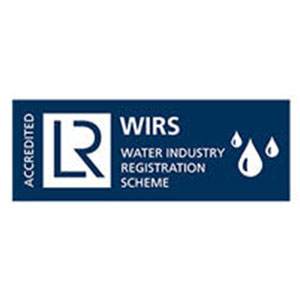What is a Fire Hydrant?
A fire hydrant is used to access water directly from the local main supply, equipped with a fire hose connection for use in the event of a fire.
Why should you have a fire hydrant tested?
British Standard BS9990:2015 states that where a fire hydrant exists on your premises, arrangements should be made by the owners or occupiers for annual maintenance.
Failure to adhere to the rules and regulations could result in prosecution; and may also invalidate your insurance if a fire situation were to occur and the system fails due to a lack of regular maintenance.
Why should you use specialists to carry out fire hydrant annual maintenance?
Fire equipment maintenance must be carried out by Competent Persons as required by relevant British Standards, Codes of Practice (Fire Safety Order (RRFSO)) and guidelines as prescribed by the manufacturers.
The RRFSO states in Part 2, Fire Safety Duties – Section 17 (Maintenance):
Where necessary, in order to safeguard the safety of relevant persons the responsible person must ensure that the premises and any facilities, equipment and devices provided in respect of the premises under this Order or, subject to paragraph (6), under any other enactment, including any enactment repealed or revoked by this Order, are subject to a suitable system of maintenance and are maintained in an efficient state, in efficient working order and in good repair. In the event of an incident, fire investigators will ask to see a Certificate of Conformity, which should only be issued if the required standards have been adhered to.
Self-Lay Services ensures all works are completed in accordance with BS9990:2015 – the industry recognised British Standard.
Fire hydrant flow testing provides important field information to water service planners and fire services so they can accurately estimate the capabilities of water mains. Testing uncovers any mechanical problems. Hydrants are tested, inspected and maintained to the requirements of section 57 of the water industries Act 1991.

Static pressure test
The static pressure test is conducted by attaching the static pressure assembly to the stand pipe with the vent cock open. The hydrant is then opened and the vent cock is closed when the stand pipe is free of air. A pressure reading is then taken, and the hydrant is closed. The vent cock is then opened to release the pressure before removing the stand pipe assembly.
Flow test
Before attaching the flow tube to the hydrant stand pipe, the main is flushed for a short time, approximately one minute, to clear any debris which may cause damage to the flow sensor. After flushing, the flow tube is attached to the stand pipe and the hydrant valve is fully opened. The digital display is left to settle before any readings are taken.
Visual inspection
Identify:
- Hydrant frame
- Cover
- Surface surrounding the hydrant
- Indicator plate
- Age
- Location
- Material
They are used to either supplement the water supply for fire fighting or to supply/refill the tank in a fire appliance.
The Fire & Rescue Service has a statutory duty to ensure that all reasonable measures are taken to ensure there is an adequate supply of water and to ensure its availability for use in case of a fire. Therefore, ensuring fire hydrants are in good working order is very important.
Fire Hydrants

Fire Hydrant Maintenance
Annual Test and/or Inspection
Hydrants shall be subject to an annual test / inspection. The inspection includes:
- Above ground inspection – the hydrant frame, and cover, and the surrounding surface is checked for damage. The hydrant marker post is checked to see if the information shown is correct and is clearly visible. Any overgrowth is cut back and post and lid and kerb may require re-painting.
- Below ground inspection – this Involves checking the hydrant pit and the hydrant itself. It is checked for leakage, the pit itself may require clearing of silt or debris which may affect the delivery of water for fire fighting purposes. The hydrant is also ‘wet tested’ to ensure the hydrant is working properly. They may also be tested for water pressure and flow.
Markings

Plates should be a not less than 180 mm wide by 205 mm high.
The hydrant marker post and indicator plate are in position and correct for main size, distance and hydrant identification number is marked on post.
The top number indicates the size in mm of the water main feeding the fire hydrant (125 mm), and the lower number indicates in metres the distance from hydrant pate the hydrants cover is away (i.e. 4.0 m). The hydrant lid / frame shall be identified by being painted to conform to Colour Reference No: 309 (Canary Yellow), BS 381C.
It is a mandatory requirement to ensure all Fire Hydrants are clearly marked and accessible for use at any time.








